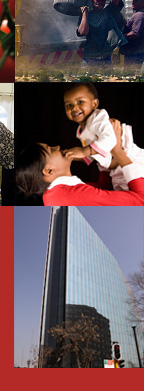
The Gauteng city-region is not a ‘real’ place – it has no formal borders or boundaries, no officials, no budget, no official status or existence – it is a perspective, a way of looking at and understanding a social economy in space. The GCR is a perspective, one that describes a real set of inter-relationships, whether measured in terms of economic linkages, transport, social and recreational linkages and activities, and so on. But how do we take a perspective and make it ‘real’? It is urgent that the GCR perspective has to start taking concrete shape – in planning, budgeting, implementing and thinking – it cannot remain ‘a good idea’ forever. Civil society has a key role to play, whether as watch-dog, or implementer, or generator of new ideas and innovation. The Gauteng Planning Commission needs to find ways of tapping all these strengths for the benefit of the GCR. Giving the GCR shape should not be confused with any attempt to try and create some new metropolitan space and government. It is about making the city-region a reality in the workplaces, schools, taxis and buses, social spaces and living spaces, of all who live and work in the GCR. The goal is that when decisions are made – at all levels of society, government and economy – they account for the city-region as a whole. For example, the next set of five-year Integrated Development Plans (IDP's) will be generated once the local elections have been completed. Should GCRO work with the GPC in developing a quasi-IDP for the GCR, a blueprint, identifying the ideal policy, budget and programmatic interventions that would most benefit the city-region and help it become a more powerful global player in the world of competitive city-regions? For, while it may never be or become a ‘real’ place that appears on maps, the GCR must above all be a policy instrument, something that informs policy-makers in all spheres, influences budget decisions in all spheres, and coheres them for the benefit of the larger city-region. |
 |
||

